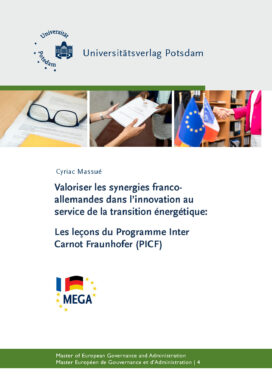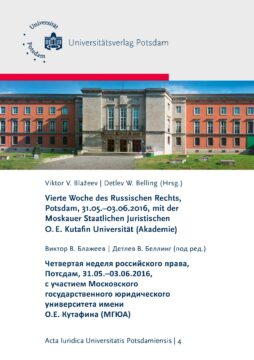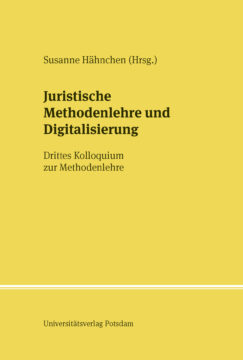In the context of increasing environmental concerns, innovation in the field of energy technologies represents a central bottleneck. This rapidly growing market is already the scene of fierce international competition. Energy research therefore represents a multiple challenge for Europe: The technologies developed should help reducing greenhouse gas emissions, while at the same time limiting our dependencies. In addition, the innovation produced should help positioning industrial Europe as a frontrunner in the globally competitive energy technology market. Thanks to the highly complementary national research landscapes, the Franco-German energy research cooperation has particularly high potential. Bilateral research programs are a promising tool for promoting untapped synergies. By addressing bilateral Franco-German partnerships on specific issues, bilateral programs complete the European funding tools. The Inter Carnot Fraunhofer (PICF) program is a mature example of such a program. Thanks to harmonized procedures, mutually beneficial cooperation projects in the energy sector could be realized. The PICF investigation also shows, however, that bilateral funding programs must include the possibility of follow-up funding in order to maintain the cooperation and bring it to completion. In the context of energy research, demonstration projects should also be included in the target group of the bilateral funding programs. Calls for proposals should be thematically limited based on the recommendations of an independent scientific body. Franco-German endeavors could then serve as a model of how intra-European synergies can be transformed into groundbreaking innovation.
Les leçons du Programme Inter Carnot Fraunhofer (PICF)
133 pages
Release year 2021
Series: MEGA-Schriftenreihe , 4
Non-taxable transaction according to § 1 (1) UStG/VAT Act in combination with § 2 (3) UStG/VAT Act a. F. Providing this service, the University of Potsdam does not constitute a Betrieb gewerblicher Art/Commercial Institution according to § 1 (1) No. 6 or § 4 KStG/Corporate Tax Act. If the legal characterization of our business is changed to a commercial institution subsequently, we reserve the right to invoice VAT additionally.
In the context of increasing environmental concerns, innovation in the field of energy technologies represents a central bottleneck. This rapidly growing market is already the scene of fierce international competition. Energy research therefore represents a multiple challenge for Europe: The technologies developed should help reducing greenhouse gas emissions, while at the same time limiting our dependencies. In addition, the innovation produced should help positioning industrial Europe as a frontrunner in the globally competitive energy technology market. Thanks to the highly complementary national research landscapes, the Franco-German energy research cooperation has particularly high potential. Bilateral research programs are a promising tool for promoting untapped synergies. By addressing bilateral Franco-German partnerships on specific issues, bilateral programs complete the European funding tools. The Inter Carnot Fraunhofer (PICF) program is a mature example of such a program. Thanks to harmonized procedures, mutually beneficial cooperation projects in the energy sector could be realized. The PICF investigation also shows, however, that bilateral funding programs must include the possibility of follow-up funding in order to maintain the cooperation and bring it to completion. In the context of energy research, demonstration projects should also be included in the target group of the bilateral funding programs. Calls for proposals should be thematically limited based on the recommendations of an independent scientific body. Franco-German endeavors could then serve as a model of how intra-European synergies can be transformed into groundbreaking innovation.
Recommended Books
-
 2018
2018Detlev W. Belling, Viktor V. Blažeev, Aleksander Sitnik, Tatjana Susina, Olga Tarasenko, Sergej S. Zenin
Vierte Woche des Russischen Rechts, Potsdam, 31.05.-03.06.2016, mit der Moskauer Staatlichen Juristischen O. E. Kutafin Universität (Akademie)
6,50 €Non-taxable transaction according to § 1 (1) UStG/VAT Act in combination with § 2 (3) UStG/VAT Act a. F. Providing this service, the University of Potsdam does not constitute a Betrieb gewerblicher Art/Commercial Institution according to § 1 (1) No. 6 or § 4 KStG/Corporate Tax Act. If the legal characterization of our business is changed to a commercial institution subsequently, we reserve the right to invoice VAT additionally.
zzgl. Versandkosten
Add to cart -
 2015
2015Logi Gunnarsson, Eckart Klein, Andreas Zimmermann
MenschenRechtsMagazin ; 19 (2014) 2
12,50 €Non-taxable transaction according to § 1 (1) UStG/VAT Act in combination with § 2 (3) UStG/VAT Act a. F. Providing this service, the University of Potsdam does not constitute a Betrieb gewerblicher Art/Commercial Institution according to § 1 (1) No. 6 or § 4 KStG/Corporate Tax Act. If the legal characterization of our business is changed to a commercial institution subsequently, we reserve the right to invoice VAT additionally.
zzgl. Versandkosten
Add to cart -
 2024
2024Susanne Hähnchen, Björn Steinrötter, Victoria Ibold, Thomas M. J. Möllers, Marie Herberger, Erik Weiss
Juristische Methodenlehre und Digitalisierung
14,00 €Non-taxable transaction according to § 1 (1) UStG/VAT Act in combination with § 2 (3) UStG/VAT Act a. F. Providing this service, the University of Potsdam does not constitute a Betrieb gewerblicher Art/Commercial Institution according to § 1 (1) No. 6 or § 4 KStG/Corporate Tax Act. If the legal characterization of our business is changed to a commercial institution subsequently, we reserve the right to invoice VAT additionally.
zzgl. Versandkosten
Add to cart -
 2007
2007MenschenRechtsMagazin ; 12 (2007) 1
3,00 €Non-taxable transaction according to § 1 (1) UStG/VAT Act in combination with § 2 (3) UStG/VAT Act a. F. Providing this service, the University of Potsdam does not constitute a Betrieb gewerblicher Art/Commercial Institution according to § 1 (1) No. 6 or § 4 KStG/Corporate Tax Act. If the legal characterization of our business is changed to a commercial institution subsequently, we reserve the right to invoice VAT additionally.
zzgl. Versandkosten
Add to cart
Publisher Info
Contact
Potsdam University Library
University Press
Am Neuen Palais 10
14476 Potsdam
Germany
verlag@uni-potsdam.de
0331 977-2094
0331 977-2292





